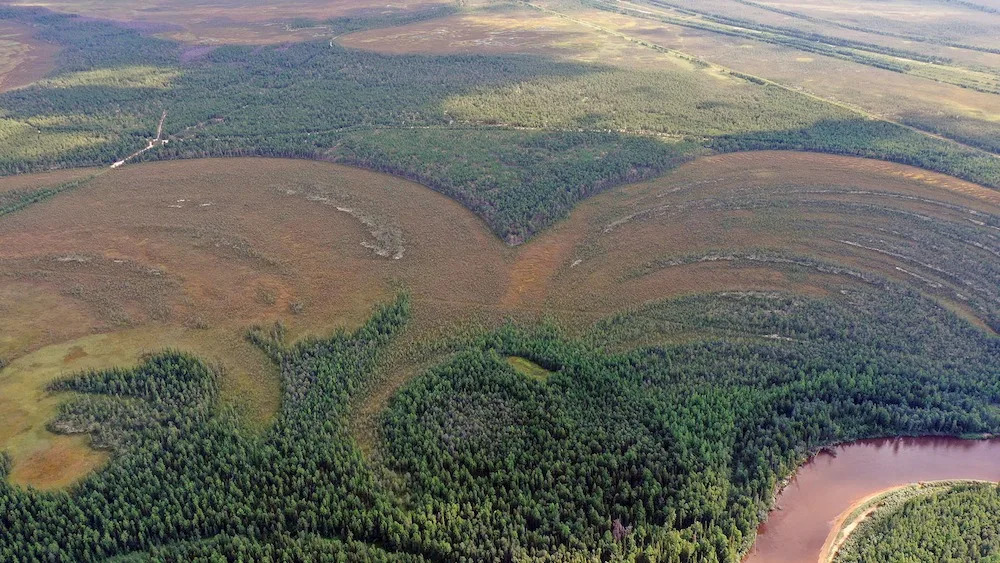Wed, December 20, 2023
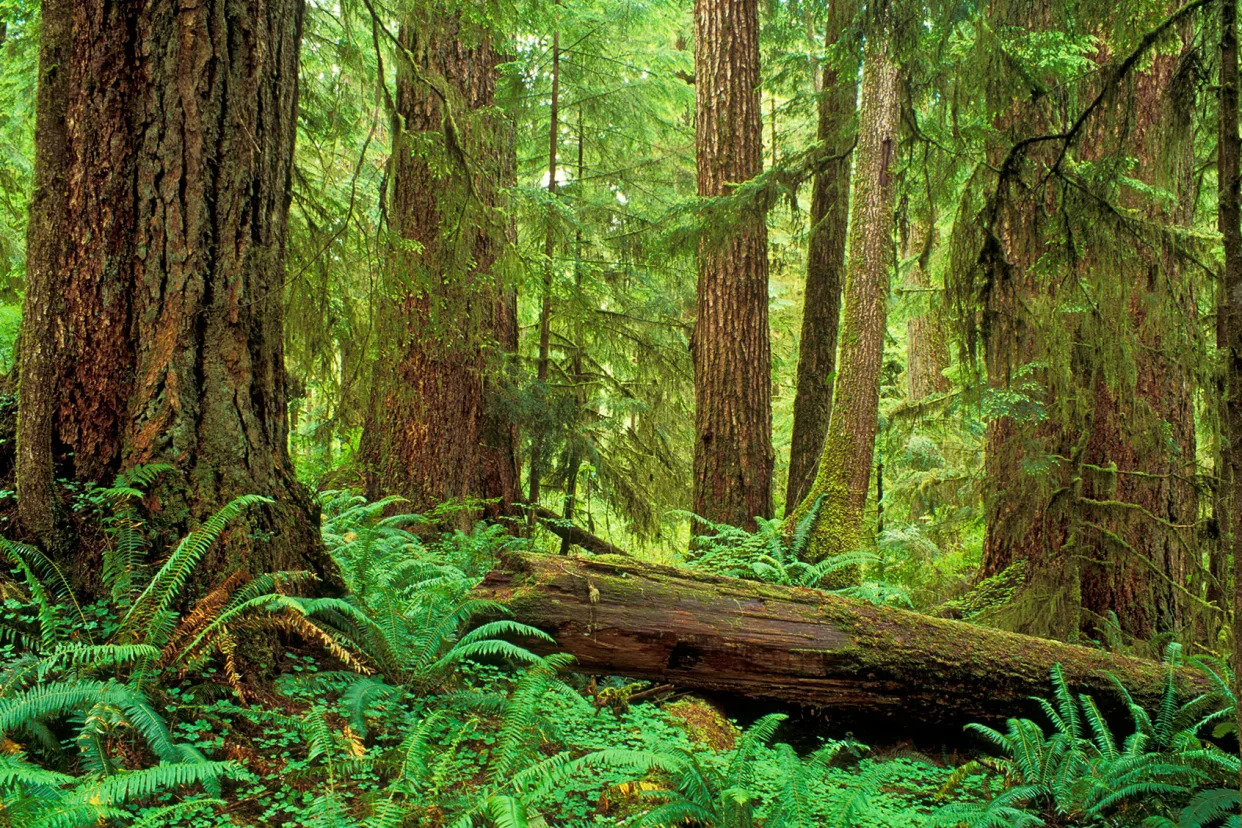
Old-growth forest Olympic National Forest Washington
A coalition of more than 120 environmental groups applauded what it called "an important first step" Tuesday, when the U.S. Forest Service announced a more conservation-friendly proposal for its management of 128 national forests and grasslands. In a April 2021 executive order, President Joe Biden told the US Forest Service to start inventorying and protecting the 150-year-old "old-growth" forests which face logging threats. More than two and a half years later, the Forest Service is now finally proposing a change to its management policy of the ancient trees — a move that only comes after critics accused the Forest Service last June of dragging its feet on behalf of the logging industry, as first reported by The Huffington Post. Citing disastrous threats to the forests, the Forest Service proposal would mark the first nationwide amendment in the agency's 118-year history and restrict logging on 25 million acres of old-growth timber. But "mature" forests — those just shy of 150 years — are still vulnerable to destruction.
“The FS has squandered the opportunity to respond meaningfully to [Biden’s executive order] by limiting the scope to old growth only, with no provisions — none — for mature trees and forests,” Jim Furnish, former Forest Service deputy chief, told HuffPost. “This small step forward is certainly better than nothing, but a far cry from the big leap needed to respond to our climate change crises. The FS logged and liquidated most of the old growth with tragic consequences and has an obligation to not only protect what remains but restore millions of acres by allowing mature forests to grow. This proposal fails entirely in that regard.”
Along with the Climate Forests Campaign coalition, support for the proposal came from the Sierra Club which called the proposal "a meaningful step towards averting climate catastrophe" and "safeguarding vulnerable ecosystems." Meanwhile, US companies are producing more oil than any country in history and is set to produce a global record of 13.3 million barrels per day by the end of the year, after President Joe Biden urged them to pump more last year and then approved a controversial Alaskan drilling project this March. The new oil production flood is outpacing the record of 13.1 million daily gallons, set by companies under former President Donald Trump in 2020. The new surge in production also comes as part of a new drilling technique that consumes vast amounts of water. The Forest Service's proposal now awaits finalization by President Joe Biden.
“This is the first time the Forest Service has said its national policy will be to protect old growth,” Wood said.
Other advocates are emphasizing that this is just Biden’s first step toward fulfilling his executive order.
“Protecting our old-growth trees from logging is an important first step to ensure these giants continue to store vast amounts of carbon, but other older forests also need protection,” Randi Spivak, public lands policy director with the Center for Biological Diversity, said in a press release. “To fulfill President Biden’s executive order and address the magnitude of the climate crisis, the Forest Service also needs to protect our mature forests, which if allowed to grow will become the old growth of tomorrow.”
Lauren Aratani
Tue, December 19, 2023
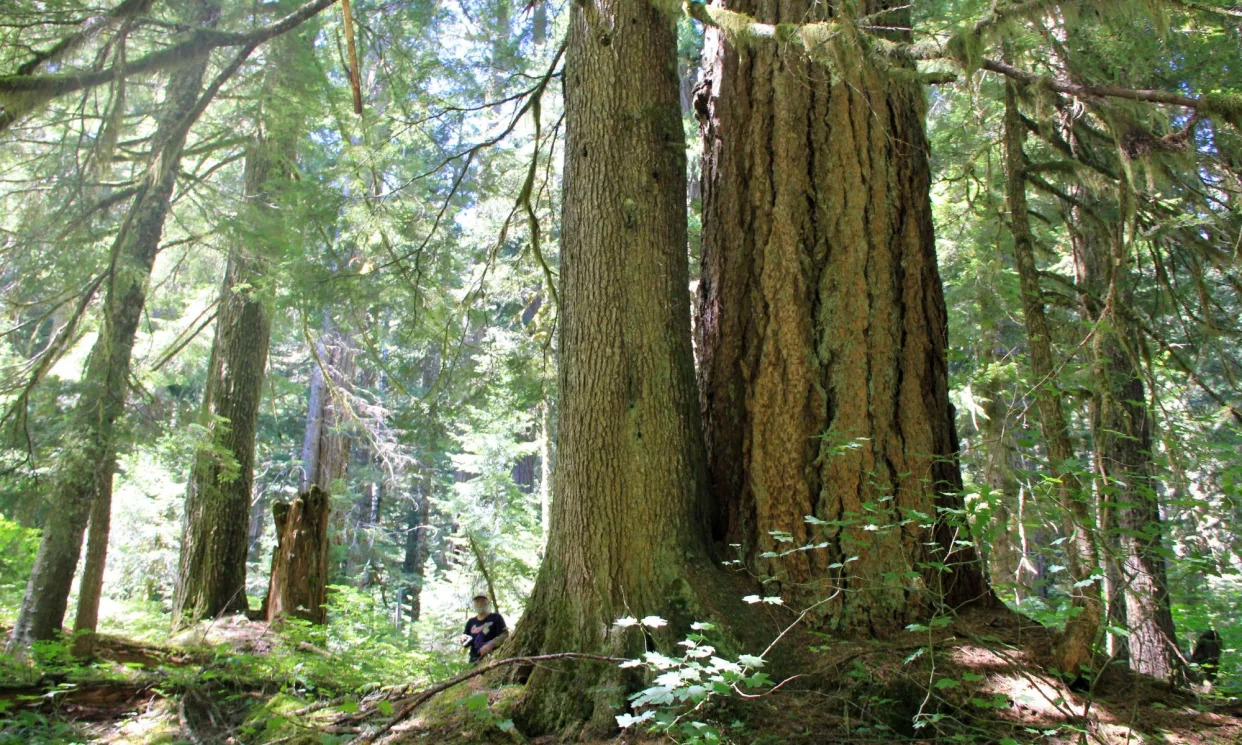
Photograph: Zach Urness/AP
Joe Biden’s administration on Tuesday announced a new proposal aimed at banning logging in old-growth forests, a move meant to protect millions of trees that play a key role in fighting the climate crisis.
The proposal comes from an executive order signed by the president on Earth Day in 2022 that directed the US Forest Service and the land management bureau to conduct an inventory of old-growth and mature forest groves as well as to develop policies that protect them.
“We think this will allow us to respond effectively and strategically to the biggest threats that face old growth,” the US agriculture secretary, Tom Vilsack, told the Washington Post. “At the end of the day, it will protect not just the forests but also the culture and heritage connected to the forests.”
The US Forest Service oversees 193m acres of forests and grasslands, 144m of which are forests. In its inventory conducted after Biden’s executive order, the agency found that the vast majority of forests it oversees, about 80%, are either old-growth or mature forests. It found more than 32m acres of old-growth forests and 80m acres of mature forests on federal land.
The land management bureau defines old-growth forests as those with trees that are in later stages of stand development, which typically means at least 120 years of growth, depending on species. The giant sequoias in California, for example, are old-growth trees. Mature forests, meanwhile, have trees that are in the development stage immediately before old growth.
Advocates for years have been pushing the Biden administration to explicitly ban logging in old-growth and mature forests. Trees that are in their old-growth stage are able to store more carbon than younger trees, making them a natural solution to fighting the climate crisis.
In 2022, shortly before Biden announced his executive order, a group of more than 130 scientists wrote a letter to Biden advocating a ban on logging in old-growth forests.
“Older forests provide the most above-ground carbon storage potential on Earth, with mature forests and larger trees driving most accumulation of forest carbon in the critical next few decades,” the letter read. “Left vulnerable to logging, though, they cannot fulfill these vital functions.”
The ban will come into effect in early 2025, allowing time for the Forest Service to finalize rules that will protect old-growth forests from logging. Because it comes under an executive order, its existence depends on the outcome of the 2024 presidential election, making advocates worried about the protections’ vulnerability to the country’s political climate.
But federal agencies have also been under pressure from the timber industry, which argues that logging creates economic activity and helps to fight wildfires. The proposal focuses on most old-growth forests, leaving mature forests still vulnerable to logging, which is a middle ground between environmentalists and the timber industry.
Will humans cut down trees that have been alive for thousands of years? New rules say no.
Trevor Hughes, USA TODAY
Updated Wed, December 20, 2023

The nation's oldest trees are getting new protections under a Biden administration initiative to make it harder to cut down old-growth forests for lumber.
The news has implications for climate change and the planet: Forests lock up carbon dioxide, helping reduce the impacts of climate change. That's in addition to providing habitat for wild animals, filtering drinking water sources and offering an unmatched historical connection.
Announced Tuesday, the initiative covers about 32 million acres of old growth and 80 million acres of mature forest nationally ‒ a land area a little larger than California.
“The administration has rightly recognized that protecting America's mature and old-growth trees and forests must be a core part of America's conservation vision and playbook to combat the climate crisis,” Garett Rose, senior attorney at Natural Resources Defense Council said in a statement.
What trees are being protected?
Most of the biggest stretches of old-growth forests in the United States are in California and the Pacific Northwest, along with Alaska, although this initiative also covers many smaller forests on the East Coast where trees may be only a few hundred years old. Old-growth sequoias and bristlecone pines in the West can be well over 2,000 years old.
Environmental activists have identified federally owned old and mature-growth forest areas about the size of Phoenix that are proposed for logging, from portions of the Green Mountain Forest in Vermont to the Evans Creek Project in Oregon, where officials are proposing to decertify almost 1,000 acres of spotted owl habitat to permit logging. The Biden plan tightens the approval process for logging old and mature forests and proposes creating plans to restore and protect those areas.
The forests targeted in the new Biden order are managed by the U.S. Forest Service, separate from other initiatives to protect similar forests overseen by the Bureau of Land Management.
US has long history of logging
European settlers colonizing North America found a landscape largely untouched by timber harvesting, and they heavily logged the land to build cities and railroads, power industries and float a Navy.
In the late 1800s, federal officials began more actively managing the nation's forests to help protect water sources and provide timber harvests and later expanded that mission to help protect federal forests from over-cutting. And while more than half of the nation's forests are privately owned, they're also among the youngest, in comparison to federally protected old-growth and mature forests.
Logging jobs once powered the economies of many states but environmental restrictions have weakened the industry as regulators sought to protect wildlife and the natural environment. Old-growth timber is valuable because it can take less work to harvest and turn into large boards, which are themselves more valuable because they can be larger and stronger.
“Our ancient forests are some of the most powerful resources we have for taking on the climate crisis and preserving ecosystems,” Sierra Club forests campaign manager Alex Craven said in a statement. “We’re pleased to see that the Biden administration continues to embrace forest conservation as the critical opportunity that it is."
This article originally appeared on USA TODAY: Old-growth forests rules protect old trees, Biden administration says
Biden administration moves to protect old growth forests
Tue, December 19, 2023

Secretary of Agriculture Tom Vilsack unveiled the administration's proposed changes to old-growth forest protections on Tuesday.
Dec. 19 (UPI) -- The Biden administration announced a new plan Tuesday to protect some of the nation's oldest trees on national forests and grasslands throughout the United States.
The action includes what the administration described as a "first-of-its-kind" proposal from the U.S. Department of Agriculture to amend all 128 forest land management plans throughout the nation "to conserve and restore old-growth forests across the National Forest System."
"Old-growth forests are a vital part of our ecosystems and a special cultural resource. This proposed nationwide forest plan amendment -- the first in the agency's history -- is an important step in conserving these national treasures," Agriculture Secretary Tom Vilsack said. "Climate change is presenting new threats like historic droughts and catastrophic wildfire. This clear direction will help our old-growth forests thrive across our shared landscape."
The White House said the Forest Service would also initiate the process of updating the Northwest Forest Plan for climate resilience, including for mature and old forest ecosystems.
"The Northwest Forest Plan, initiated in 1994, guides the management of certain federally managed forests in Washington, Oregon, and California. These forests contain roughly one-quarter of the remaining old growth on the national forest system in the lower 48 states," the White House said.
The old-growth forest protections would prevent commercial logging on all 193 million acres of forests and grasslands, protecting some of the nation's oldest trees, many more than 100 years old and rich in carbon.
White House Council on Environmental Quality Chair Brenda Mallory said U.S. forests absorb carbon dioxide equivalent to more than 10% of our nation's annual greenhouse gas emissions, making it a critical player in climate change.
"Under President Biden's leadership, our administration is acting to conserve and restore old-growth forests so nature can continue to be a key climate solution," Mallory said.
Officials said the proposal would benefit about 25 million acres of old growth overseen by the Forest Service, of which 45% is not protected from logging, and allows continued cutting under specific conditions.
It also requires the Forest Service to keep tabs on changes to old growth and efforts to protect it.
Biden administration proposes new steps to preserve the nation’s old-growth forests
Donald Judd, CNN
Tue, December 19, 2023
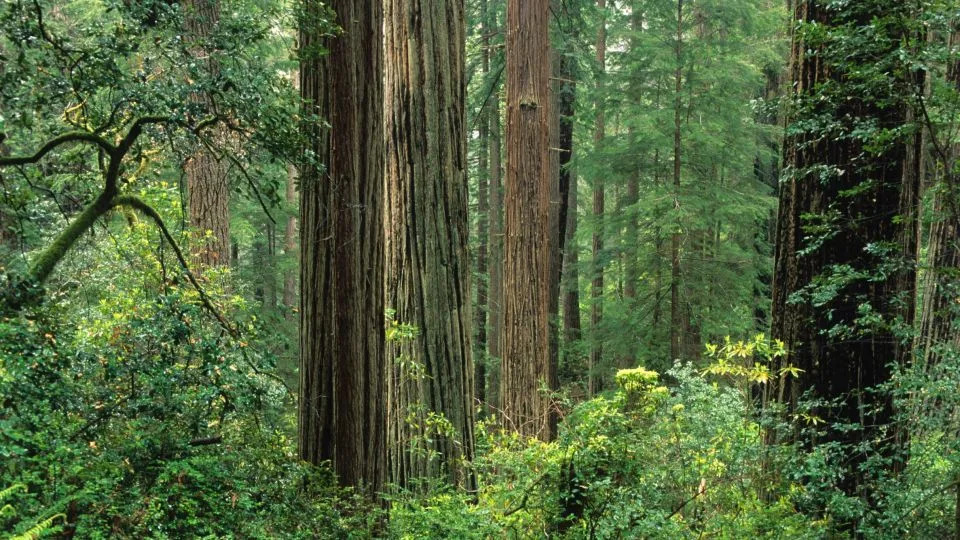
The Biden administration proposed new steps Tuesday to conserve and restore the nation’s old-growth forests in a move it projects could combat greenhouse gas emissions and counter the effects of climate change.
The proposal from the US Department of Agriculture would amend all 128 forest land management plans across the country for the first time, with a goal of preserving and restoring old-growth and mature forests across the nation.
According to a fact sheet shared with CNN, the USDA and the Department of Interior’s Bureau of Land Management oversee a combined 112 million acres of old-growth and mature forests on federal lands.
Old-growth and mature forests are a crucial part of the administration’s efforts to combat climate change, serving as a carbon sink by absorbing the equivalent of more than 10% of the nation’s annual greenhouse gas emissions. Old-growth forests in particular tend to have a higher carbon density, which the USDA says makes them well suited to store more carbon than younger forests.
The proposal, the White House said Tuesday, falls under a 2022 Earth Day Executive Order from President Joe Biden aimed at tackling the climate crisis and strengthening climate resilience.
In addition, for the first time since 2007, the National Forest Service is updating its Northwest Forest Plan, which guides management of roughly one quarter of the continental United States’ federally managed forests, all located in Washington, Oregon and California, to better prepare for climate resilience.
Biden administration takes step toward protecting old-growth trees
Rachel Frazin
Tue, December 19, 2023

The Biden administration on Tuesday took a step toward protecting older trees that store carbon dioxide and help to lessen climate change.
It issued a proposed plan with apparent limitations on cutting down old-growth trees — saying lands can’t be managed with the primary intention of logging such trees for economic reasons.
It does say that “ecologically appropriate” timber harvesting will be allowed as long as it meets certain standards.
The Agriculture Department also said it was proposing incorporating a “national intent” to maintain and improve old-growth forests into all of the land management plans within the National Forest System.
David Dreher, senior manager for public lands at the National Wildlife Federation, said the establishment of the “national intent” to protect these forests is important because it will inform decisions made by Forest Service officials.
“It does guide land managers in an important way when they look at how they want to manage acres on the ground,” Dreher told The Hill.
“An affirmative statement that says we need old forests and what I do in these old forests or in mature forests that I want to recruit into old forests contributes to the long-term persistence of those forests,” he said. “We’ve never had that before.”
Studies have shown that old-growth trees store significant amounts of carbon dioxide — making their protection important for fighting climate change.
Biden Administration Finally Moves To Protect Remaining Old-Growth Forests From Logging
Chris D'Angelo
Updated Tue, December 19, 2023

The U.S. Forest Service, an agency with a long history of prioritizing timber production, has taken a first step toward protecting the nation’s most ancient forests from logging.
The agency on Tuesday announced a proposal to amend management plans for all 128 national forests and grasslands across the country to better conserve carbon-rich “old-growth” forests, typically defined as those at least 150 years old and largely undisturbed by human activity.
“Old-growth forests are a vital part of our ecosystems and a special cultural resource. This proposed nationwide forest plan amendment — the first in the agency’s history — is an important step in conserving these national treasures,” Agriculture Secretary Tom Vilsack said in a statement. “Climate change is presenting new threats like historic droughts and catastrophic wildfire. This clear direction will help our old-growth forests thrive across our shared landscape.”
The proposal, if finalized, would restrict commercial logging across the approximately 25 million acres of old-growth timber that the Forest Service manages, but stops short of limiting harvest in “mature” forests, those that are decades old but haven’t reached the old-growth stage.
The move comes after months of the Forest Service seemingly dragging its feet on the issue, as HuffPost previously reported.

A logger cuts down a large fir tree in the Umpqua National Forest, near Oakridge, Oregon.
The Climate Forests Campaign, a coalition of more than 120 environmental groups, applauded Tuesday’s announcement as “an important first step” but called on the Forest Service to also take action to safeguard mature trees. Together, mature and old-growth forests form a key natural climate solution, sequestering a massive amount of planet-warming greenhouse gasses.
“Our ancient forests are some of the most powerful resources we have for taking on the climate crisis and preserving ecosystems,” Alex Craven, forests campaign manager at the Sierra Club, said in a statement. “We are pleased to see that the Biden administration continues to embrace forest conservation as the critical opportunity that it is. This amendment is a meaningful step towards averting climate catastrophe, safeguarding vulnerable ecosystems, and fulfilling President Biden’s commitment to preserve old-growth and mature trees across federal lands.”
The proposal stems from an executive order that President Joe Biden signed in April 2021 that tasked the nation’s two largest federal land managers, the Forest Service and the Bureau of Land Management, with first inventorying existing old-growth and mature forests and then crafting policies to better conserve and restore them.
Earlier this year, critics accused the Forest Service of not taking the executive order seriously and resisting abandoning what many view as an entrenched, logging-centric mindset within the agency.
Jim Furnish, a former deputy chief of the Forest Service in the Clinton administration, told HuffPost he is “underwhelmed” by Tuesday’s action.
“The FS has squandered the opportunity to respond meaningfully to [Biden’s executive order] by limiting the scope to old growth only, with no provisions — none — for mature trees and forests,” he said in an email. “This small step forward is certainly better than nothing, but a far cry from the big leap needed to respond to our climate change crises. The FS logged and liquidated most of the old growth with tragic consequences and has an obligation to not only protect what remains but restore millions of acres by allowing mature forests to grow. This proposal fails entirely in that regard.”
Steve Pedery, conservation director at environmental organization Oregon Wild, said the proposal is better than he was expecting.
“It is not the permanent mature and old-growth forest protection rule we are ultimately seeking, but if someone offers me a national ban on old-growth logging and a path towards a broader policy that includes mature, I’ll take it,” he said in an email.
But Pedery is concerned that a future administration could stymie the Biden administration effort.
“Development and implementation will almost certainly spill over into 2025 and beyond, so how effective it will ultimately be depends on who is in the White House,” he said. “That is why we have advocated for an administrative rule, like the Roadless Area Conservation Rule, because it would be much harder for future administrations to roll back or modify.”
Asked about the durability of the agency’s proposal, Vilsack told The Associated Press that it would be “a serious mistake for the country to take a step backwards now that we’ve taken significant steps forward.”
US Forest Service proposes to conserve old-growth forests, including Pisgah, Nantahala
Mitchell Black, Asheville Citizen Times
Wed, December 20, 2023
ASHEVILLE – The U.S. Department of Agriculture Forest Service announced a proposal Dec. 19 to conserve and steward old-growth forest conditions on national forests and grasslands nationwide. This plan would have a particular impact on Western North Carolina, home to the Nantahala and Pisgah national forests, which cover more than 1 million acres across the mountains.
Old-growth forests are systems created by older trees. They can differ from younger forests by having large accumulations of woody material, increased canopy layers, species composition and ecosystem function, according to a 1994 U.S. Forest Service definition. These forests store large amounts of carbon, increase biodiversity, produce clean water and reduce wildfire risks.
The proposal follows an Executive Order signed by President Joe Biden in April 2022, which directed his administration to conserve old-growth forests.
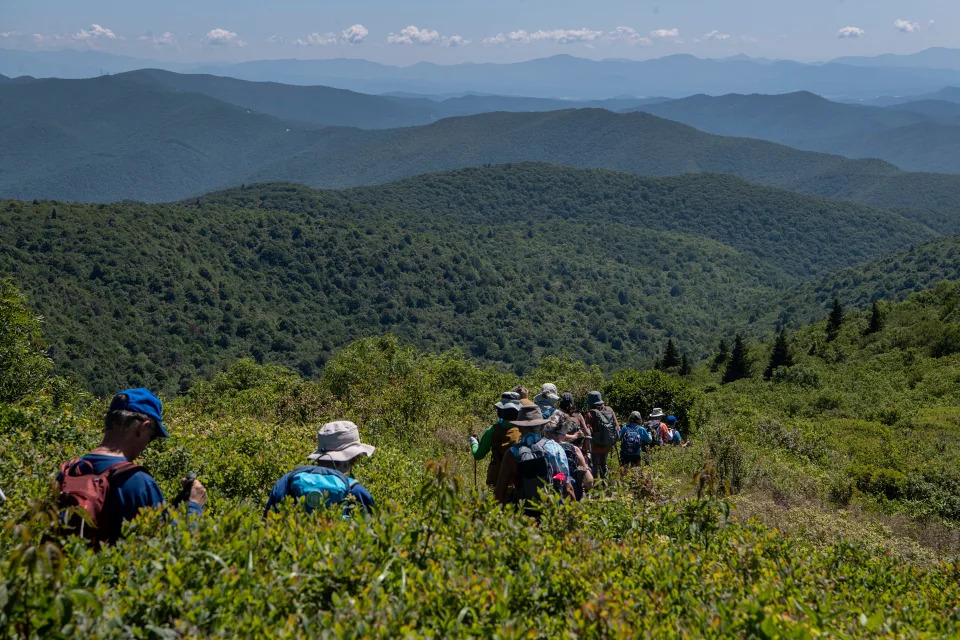
Hikers in Pisgah National Forest.
“The agency is telling us ‘this is where we want to go in the future and this is who we want to be,’” Senior Attorney with the Southern Environmental Law Center Sam Evans told the Citizen Times Dec. 19.
“We want protecting old-growth to be a big part of the job of the forest service. I can't overstate how important that is. We've been waiting on that for a long time.”
The USDA plans to amend each of the nation’s individual forest management plans, which are the planning documents for national forests and grasslands. As part of these amendments, national forests will need to create or adopt a strategy for old-growth forest conservation. The amendments direct national forests to maintain and improve old-growth forests over time.
The U.S. Forest Service released a final version of the Pisgah-Nantahala Land Management Plan Feb. 17 after more than a decade of work to revise it.
Critically, the amendments would create standards for protecting old-growth forests, including restricting vegetation management, like logging, from “degrading or impairing the composition structure or ecological processes in a manner that prevents the long-term persistence of old-growth forest conditions within the plan area.”
Forest managers can manage vegetation for the purpose of proactive stewardship for facilitating the growth or proliferation of old-growth forests.
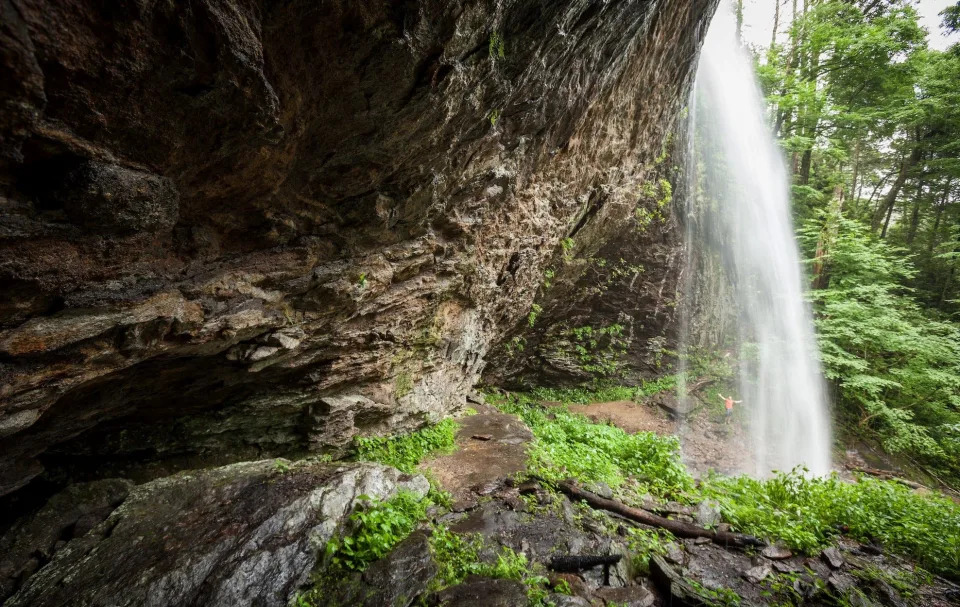
The Big Ivy area of Pisgah National Forest in Buncombe County.
The proposed amendments will now face a multi-stage review process, during which the public will have an opportunity to solicit input and the USFS will conduct an environmental impact study. This review process will begin with a public comment period. Commenters can submit their opinions through a portal on the USFS website.
Earlier this year, the U.S. Forest Service conducted a study that found that old-growth forests represent 18% of all forested lands managed USFS and the Bureau of Land Management. North Carolina’s four national forests comprise 1.25 million acres of public lands.
More: Asheville groups threaten to sue US Forest Service over Endangered Species Act violation
More: Pisgah, Nantahala plan done: Forest service still seeking feedback, logging fears remain
Between fires and lawsuits, it has been a busy year for North Carolina’s national forests.
Wildfires burned across WNC during the fall, including in the Pisgah and Nantahala national forests.
In July, six conservation groups threatened to sue the U.S. Forest Service for violating the Endangered Species Act regarding the Nantahala-Pisgah National Forest Land Management Plan finalized in February. The organizations said that the logging proposal in the land management plan would impact six protected bat species. They gave the Forest Service 60 days to address their concerns. That period has expired and the groups are eligible to sue.
Mitchell Black covers Buncombe County and health care for the Citizen Times. Email him at mblack@citizentimes.com or follow him on Twitter @MitchABlack. Please help support local journalism with a subscription to the Citizen Times.














